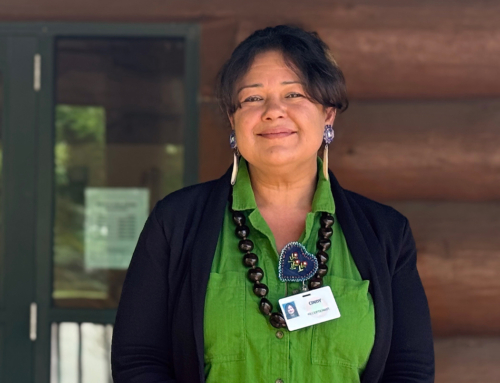Before the advent of refrigeration and preservatives, Oneidas learned how to make the best use of the gifts of Mother Earth by “eating the seasons.”
In the fall, Oneidas harvested vegetables and fruit and dried them for winter consumption. Brine, or liquid salt, was used to preserve meat for the winter; the Oneidas would let the liquid evaporate and sprinkle the resulting salt crystals on the meat before it was hung to dry. And Oneidas feasted on deer, geese, duck and raccoon during the fall to build up the fatty stores that would help them survive the scarcity of fresh food during the winter.
The meat and corn of the Oneidas’ diet was augmented by nuts and wild rice, also gathered in the fall. Hickory nuts, black walnuts, butternuts and chestnuts added needed protein and fat to offset the harsher conditions prevalent in winter. Wild rice, which grew in the swampy areas, was dried and stored and was a good source of complex carbohydrates throughout the winter months.
As the snow melted and spring began to warm the region, the Oneidas’ diet changed. Wild onions, leeks, milkweeds and dandelions would be boiled and eaten. The onions and leeks provided protection from summer’s insects because ingesting the vegetable caused pores to exude an aroma the bugs disdained.
The leeks’ appearance also heralded the beginning of fishing season. Trout, bullhead, sheephead, walleye, pike, bass and especially salmon would provide a welcome change in the diet of most Oneidas.
The onset of spring also provided a much loved treat: maple syrup. Several cuts would be made on the bark of maple trees to allow the sap to flow. Once the sap was collected, it was boiled down to obtain the syrup. Sometimes the process was prolonged to extract all of the sap’s moisture and a hard candy would form, which could be eaten in this form or saved and used later to flavor foods.
Strawberries heralded the arrival of summer, and the Oneidas celebrated with a strawberry ceremony, which has been carried on through the generations to today. Everything would be flavored by the delectable first fruit of summer. Strawberry drink, mush and even the corn soup would enjoy a fresh piquancy with the berries’ inclusion.
Other berries and fruits also are indigenous to the region and ripen at different intervals throughout the warmer months – blackberries, raspberries and blueberries, as well as pears, plums, peaches, apples and grapes. Sassafras was gathered and used for tea, acting as a natural blood thinner, which kept high blood pressure in check.
“Eating the seasons” is part of who the Oneidas were, who we are, and who we should continue to be: a people in harmony with nature, our bodies and our health.







